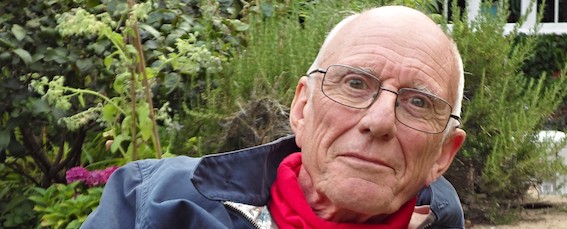Elmgreen & Dragset’s “Tomorrow”, at the V&A
I was oddly touched by Tomorrow. Its conceit was believable in both character and staging, and precisely because they are preposterous. Its central figure Norman Swann, was posited as probably queer and possibly a non-practising pederast; as glamorous, sad, modernist and – yes – socialist.
The event is staged in huge, glowing, sequestred rooms which took one’s imagination to any number of Georgian houses in London squares. So there’s plenty to get your teeth into. When didn’t architects live in houses more gorgeous or viable than those they design? And yet, when that old joke’s been made, isn’t this show right to make us remember that much modern architecture has been wonderful?
Before I visited Tomorrow, I was happily ignorant of the agenda of its creators, as displayed in their previous works. They seem to be pretty Euro-normal arty-leftists. But here, they seem to be channelling Baron Corvo, Le Corbusier, the Architectural Association and Anthony Blunt, in a giddy mix which is not a muddle, and is surprisingly plausible. It is all deeply camp.
Moreover, this show is not at all hectoring. There is a real unhappiness to be mined in the large aesthetic issues about architecture in Britain. One really can imagine a man such as Swann longing to prolong the burst of creativity which characterised some socialist public housing in the 1970s, as we see in Camden Town, Kentish Town and Pimlico still. One could easily conceive of there being an affluent but serious man squandering his wealth and hope in such a mission. Why might he not be elegant and intent?
I do by the way think it a bit odd that the V&A posits that he would, even in his decline and dotage, be attended by manservants in tails: that is hardly consistent with the story of neglect the show embodies. And it is not likely, either, that a stylish man would want those sorts of uniforms about him.
I do, further by the way, very much like the muddle which is the V&A. I like the way its curators are stuck with a semi-serious art-waffle (of the kind beautifully anatomised by Peter Aspden in last weekend’s FT), all about high purpose and layered meanings and accessibility. But then their offerings – Bowie and ballgowns amongst the crucifixes – are kitsch and elitist by turns, and sometimes simultaneously. It is the delicious problem of being a huge enterprise devoted to decoration and the decorative. What does a Drabbie, conformist, Auto-liberal, dumbed-down, PC, structuralist, theoretising, pseudo-dissident, faux-insurgent, half-baked, joke-academic artistic culture do when faced with a long history of achievement by classical, high-art, elitist creatives who were responding to the human longing to be uplifted, informed, and distracted by works which might pretty or sublime by turns?
One answer is that it can simply rely on the post modern sensibility – its being scattered and scatty. Whatever people have historically loved is OK by the V&A, and that there is no logic or argument that can be sketched to link the whole gorgeous mess is fine by them and us, really.
Tomorrow fits well into that. Oh, and the piece devoted to it in the V&A magazine for Autumn/Winter 2013 is instructive on the show.


Leave a comment